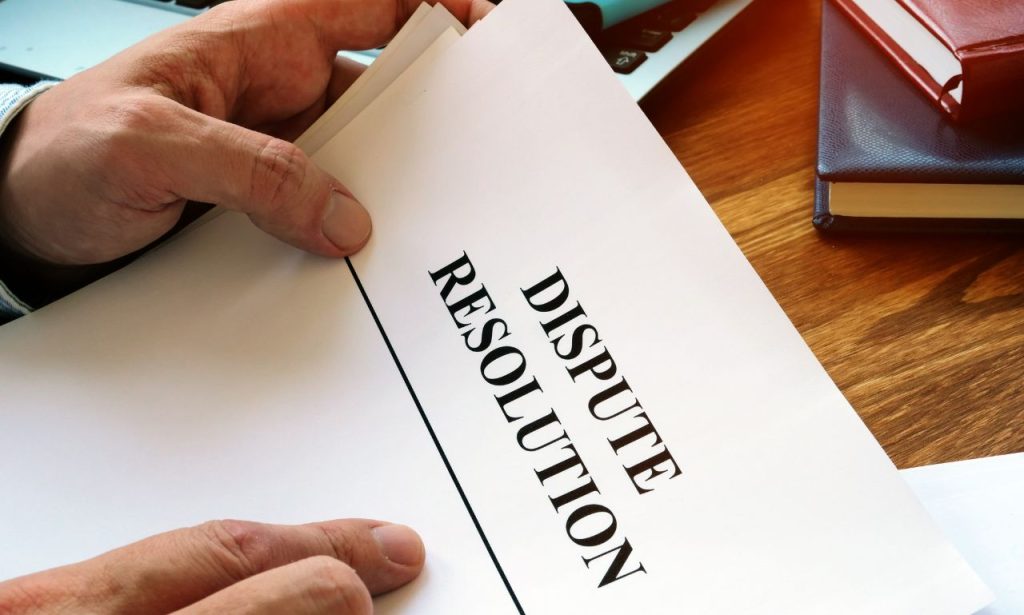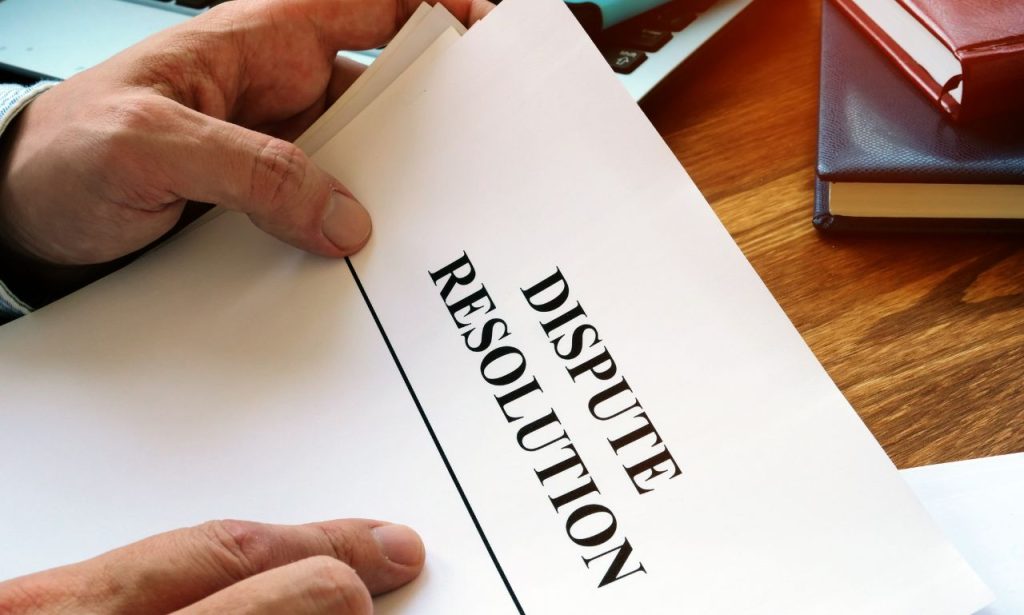Property boundary disputes are more common than you might think. I’ve seen countless homeowners face this frustrating situation during my years in real estate consulting. Your neighbor builds a fence that cuts into your yard. They may have planted trees right on what you believe is your property line. Or you’re planning a home addition and suddenly discover discrepancies about where your property ends.
I will walk you through practical steps to settle these disputes efficiently. My goal isn’t just to help you protect your property rights and maintain peace in your neighborhood. Ready to solve your boundary headache? Let’s dive in.
Check Your Property Deed
The first step in resolving boundary disputes is carefully examining your property deed. This legal document contains the official description of your property boundaries and serves as your primary evidence.
Your deed should include a detailed legal description of your property’s exact boundaries, often using landmarks, measurements, and directional bearings. You can find your deed at your county recorder’s office or sometimes through online property records databases. Some property descriptions reference “metes and bounds,” which provide precise distances and directions from established points. Others refer to lot numbers in a subdivision plat map.
Stay Civil

When boundary disputes arise, emotions often run high. Your property represents a significant investment, and perceived encroachments can feel like personal violations. Despite this, maintaining civility is critical.
Approaching your neighbor with accusations or anger will immediately put them on the defensive and reduce your chances of an amicable resolution. Instead, start with a friendly conversation expressing your concerns without assigning blame. For example, say “I’m a bit confused about where our property line runs” rather than “You’ve built your fence on my property.”
Remember that many boundary issues stem from honest mistakes rather than deliberate encroachment. Your neighbor may have relied on inaccurate information or assumptions about property lines. Most people don’t intentionally build on land they don’t own. Giving them the benefit of the doubt keeps communication channels open.
Set up discussions at convenient times for both parties and be prepared to listen to their perspective with an open mind. Taking notes during these conversations helps document what was discussed and any tentative agreements reached. These civil discussions often resolve problems without further escalation and preserve the neighborly relationship that’s so valuable in community living.
Use a Mediator
When communication breaks down but you’re still hoping to avoid court, professional mediation offers an excellent middle path.
A mediator is a neutral third party trained to facilitate difficult conversations and help parties find common ground. Unlike judges, mediators don’t impose decisions but help both sides explore possible solutions. The process typically costs between $500 and $ 1,500 less than litigation expenses.
Many communities offer mediation services through bar associations or community dispute resolution centers. These professionals understand property law basics while focusing on relationship preservation. During mediation sessions, both parties present their concerns and documentation while the mediator guides the conversation toward compromise.
The informal setting reduces confrontation, and solutions often emerge that neither party initially considered. For instance, you might agree to split the cost of a new, accurate survey and establish a boundary agreement based on those findings. You may discover a mutual interest in sharing specific property features through an easement arrangement. Successful mediation concludes with a written contract that can be filed with property records, providing clarity for future owners.
File a Lawsuit
Legal action may become necessary when all other approaches fail to resolve your boundary dispute. While nobody wants to sue their neighbor, sometimes it’s the only way to protect their property rights.
Filing a lawsuit typically involves seeking a “quiet title” or an “ejectment” action. These legal proceedings ask the court to make a definitive ruling on boundary locations and ownership rights. Before proceeding, consult with an attorney who specializes in real estate law. These professionals can assess the strength of your case based on documentation and applicable property laws.
Consider whether the disputed property justifies this investment of time and money. Sometimes, a fence a few inches over the line isn’t worth years of legal battles. However, when substantial property or access rights are at stake, legal action provides the definitive resolution to protect your investment.
Check your Community’s Laws
Local regulations and zoning ordinances often influence boundary disputes in ways many property owners don’t initially consider. These rules vary significantly between municipalities and can impact how your dispute is handled.
Start by contacting your local planning department or building inspector’s office. Many communities have specific setback requirements that dictate how close structures can be to property lines. Some areas have fence height restrictions or rules about shared driveways. Understanding these local regulations might immediately clarify whether an encroachment violates code, giving you stronger standing in negotiations.
Additionally, different localities have varying laws regarding adverse possession—a legal principle where someone can gain ownership rights to land they’ve used openly for a specified period (often 10-20 years). Some regions have specific fence laws that presume boundaries based on long-standing fence locations.
Homeowners’ association rules add another layer of complexity for properties within planned communities. HOA regulations might dictate everything from fence styles to landscaping near property lines. Breaking these rules could involve penalties beyond the boundary dispute itself.
Armed with knowledge of applicable local laws, you’ll approach negotiations or potential legal action from a more informed position. This understanding helps you focus on relevant arguments and identify when violations of local codes strengthen your position.
Hire a Surveyor
Professional land surveys provide the most definitive evidence in boundary disputes. A licensed surveyor uses specialized equipment and documented land records to establish property boundaries that DIY methods cannot match precisely.
The surveying process begins with research into historical property records, including your deed and those of adjacent properties. Surveyors then use high-precision instruments to measure and mark boundary lines according to legal descriptions. Modern surveys employ GPS technology that can pinpoint locations within centimeters.
Expect to pay between $400 and $1,000 for a basic residential boundary survey, with costs increasing for larger or more complex properties. While this represents a significant investment, it’s substantially less than potential legal fees if disputes escalate.
For maximum effectiveness, consider a joint survey where you and your neighbor split costs and jointly hire one surveyor. This approach eliminates arguments about survey accuracy and demonstrates good faith in seeking an objective determination of boundary lines.
Try to Reach a Neighbor-to-Neighbor Agreement
Creative problem-solving between neighbors often produces the most satisfying resolutions to boundary disputes. These negotiated settlements can address the practical realities of property use better than strict legal boundaries might allow.
Start by identifying each party’s primary concerns and priorities. Your neighbor’s main concern is maintaining privacy with their existing fence, while yours is preserving enough yard space for planned landscaping. Understanding these underlying interests opens paths to mutually beneficial solutions.
Consider formal options like boundary agreements or easements. A boundary agreement is a recorded document where neighbors agree on specific boundary lines, sometimes varying slightly from strict legal descriptions to accommodate existing structures. Easements allow one property owner limited rights to use portions of a neighbor’s land for specific purposes, such as driveway access or utility lines.
Financial compensation sometimes facilitates agreement. If removing an encroaching structure would be prohibitively expensive, the encroaching neighbor might purchase that small section of land at market value (or higher) to legitimize the current situation. Alternatively, rental arrangements might allow temporary use of disputed areas.
Document any agreement formally with the help of a real estate attorney, then record it with your county’s property records office. This documentation prevents future disputes and protects both parties’ interests if either property changes hands.
Who Settles Property Line Disputes?
Various authorities and professionals resolve boundary conflicts depending on the dispute’s nature and stage. Understanding who can help—and their limitations—guides your strategic approach.
Local building departments handle encroachment issues that violate setback requirements or building codes. Their enforcement powers can sometimes resolve disputes without further escalation. Professional mediators facilitate negotiations but lack the authority to impose solutions if parties can’t agree voluntarily.
Licensed land surveyors determine accurate boundary locations based on legal descriptions and historical records. While they provide expert findings, they cannot adjudicate competing ownership claims. Title companies research property ownership history and may offer insurance against boundary problems, though they typically avoid active disputes.
Direct neighbor-to-neighbor discussions often work best for simple misunderstandings. More complex disputes with significant financial implications may require courts to render final decisions. Most boundary conflicts fall somewhere between these extremes, where professional guidance leads to negotiated settlements without full-scale litigation.
What are the 4 types of boundary disputes?
Property boundary conflicts typically fall into four main categories, each requiring slightly different approaches to resolution.
Lot line disputes occur when neighbors disagree about the exact location of the property line separating their parcels. These disagreements often emerge when precise boundaries suddenly matter during new construction or fence installation. Resolution typically requires professional surveys and comparison of legal descriptions in property deeds.
Encroachment issues arise when one owner’s structures, fences, or landscaping extend onto a neighbor’s property. Sometimes, these happen gradually, as with growing trees or expanding gardens. Other times, they result from construction errors. Solutions range from removing the encroachment to formal easements legitimizing the current situation.
Prescriptive easements and adverse possession claims involve one party asserting property rights based on long-term use. If someone has openly used part of your land without permission for the statutory period (varying by state from 5 to 21 years), they may claim legal rights to continue. These complex cases often require court intervention to resolve.
Fence disputes involve disagreements about fence placement, style, maintenance responsibilities, or cost sharing. Many localities have specific “fence laws” governing these issues. Some jurisdictions follow the “right-hand rule,” where neighbors are responsible for the right-facing side of boundary fences when standing on their property facing the boundary.
Understanding your dispute’s category helps determine the most effective resolution strategy and which professionals might best assist your case. Lot line disputes typically need surveyors, encroachments might require building officials, adverse possession claims need attorneys, and fence issues often have specific local regulations governing their resolution.
What is the Best Way to Resolve a Boundary Dispute?

The most effective approach to boundary disputes combines good documentation, open communication, and a willingness to seek compromise before escalating to legal remedies.
Gather all relevant property documents, including deeds, surveys, and property tax maps. Knowledge is power in these situations, and understanding the legal basis for boundary locations strengthens your position. Approach early discussions with your neighbor from a position of curiosity rather than accusation. Phrases like “I’m trying to understand where our properties meet” invite collaborative problem-solving rather than defensiveness.
When direct talks don’t resolve the issue, professional boundary surveys often clarify the situation definitively. The investment in professional measurement frequently prevents much larger expenses in legal fees later. According to community mediation centers, if survey results don’t end the dispute, professional mediation offers structured negotiation with success rates exceeding 85% for property disputes.
Consulting with a real estate attorney early provides valuable guidance on legal options and requirements for complex situations or when substantial property values are involved. They can advise whether your situation warrants more aggressive approaches or might benefit from patience and continued negotiation.
Conclusion
Solving property boundary disputes requires balancing legal rights with practical realities and neighborhood relationships. The path from confusion to resolution typically progresses through information gathering, communication, professional assistance, and, as a last resort, legal action.
Throughout this process, maintain detailed records of all communications, surveys, and agreements. These documents protect your interests and provide clarity for future property owners. While standing firm on your property rights is essential, remaining open to reasonable compromises often leads to faster, less expensive resolutions that preserve neighborhood goodwill.
ALSO READ: How to Surrender a Residential Lease
FAQs
Professional boundary surveys typically cost between $400 and $1,000 for average residential properties, with larger or more complex properties costing more.
Yes, you can legally require the removal of encroaching structures, though courts may consider factors like how long the wall has existed and whether previous owners consented.
Statutory periods range from 5 to 21 years, depending on your state. Most require 10 to 20 years of continuous, open use without permission.
While not always necessary for minor disputes, legal counsel becomes essential when significant property rights are at stake or negotiations fail.
Legal property lines remain fixed unless changed through legal processes like lot line adjustments, although physical markers may shift, and adverse possession can affect ownership rights.



